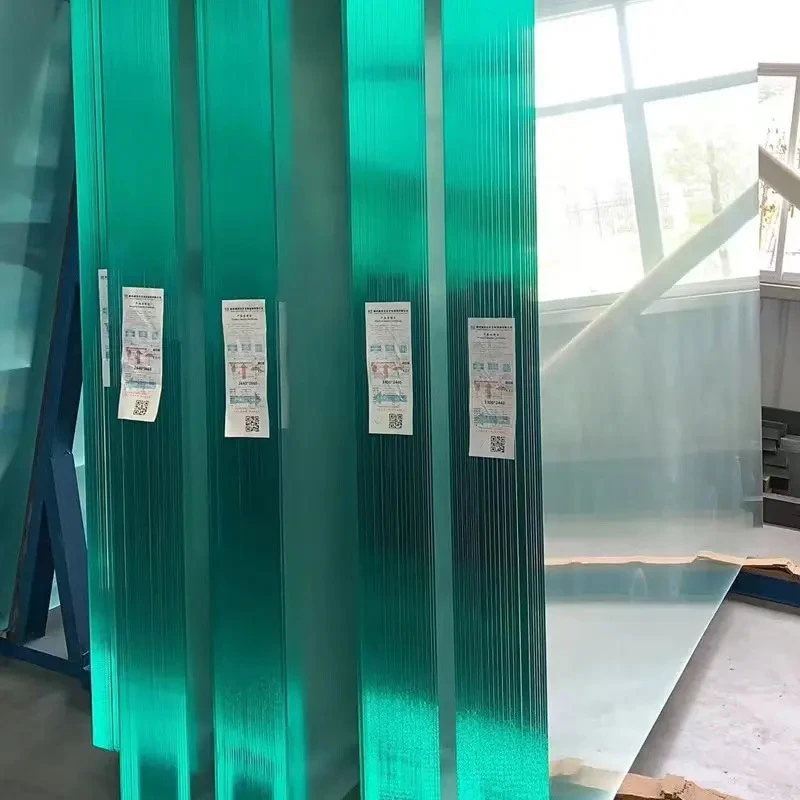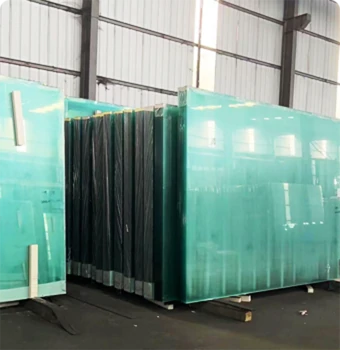Architectural glass has transformed the construction industry, offering an array of options that fuse aesthetic appeal with functional benefits. As the demand for innovative building solutions increases, understanding the various types of architectural glass available becomes crucial for architects, builders, and homeowners seeking to optimize their projects.

Tempered glass stands as one of the most utilized types due to its strength and safety features. It undergoes a thermal tempering process, making it approximately four to five times stronger than standard annealed glass. If broken, tempered glass shatters into small, blunt pieces, reducing the risk of injury, making it ideal for applications such as windows, facades, and doors. Its toughness and resistance also make it suitable for areas subjected to high stress and impact.
Laminated glass is another essential type, renowned for its safety and acoustic properties. It consists of two or more layers of glass bonded together with an interlayer, usually polyvinyl butyral (PVB). This construction holds the glass together when shattered, creating a “spider web” cracking pattern that minimizes injury risk. Laminated glass is an excellent choice for sound insulation, making it perfect for urban environments where noise reduction is paramount.

Insulated glass units (IGUs), commonly known as double glazing, consist of two or more panes of glass separated by a vacuum or gas-filled space to reduce heat transfer. This type of glass is essential for energy-efficient buildings, significantly reducing heating and cooling costs. IGUs are instrumental in creating a comfortable indoor environment by enhancing thermal insulation and minimizing condensation on inner glass surfaces.
For those seeking a fusion of aesthetic and functional benefits, low-emissivity (Low-E) glass is indispensable. Coated with a microscopic metallic layer, Low-E glass minimizes the amount of ultraviolet and infrared light that passes through without compromising visible light transmission. This feature makes it a smart choice for windows and facades in climates that require optimized heating and cooling efficiency.
types of architectural glass
Reflective glass offers a combination of solar control and privacy, making it suitable for commercial buildings. By reflecting solar energy, it helps maintain a balanced indoor temperature and reduces the need for artificial cooling. Its mirrored effect also provides one-way visibility, enhancing privacy during the day without obstructing the view from inside.
For those aiming to incorporate cutting-edge technology, switchable smart glass is a revolutionary choice. This dynamic glass can switch from transparent to opaque at the flick of a switch, offering control over privacy and lighting. It’s extensively used in offices and residential settings where open-space aesthetics are desired without compromising on privacy.
Fire-rated glass is a critical choice in areas where fire safety is a concern. Rated to withstand high temperatures, it helps compartmentalize buildings to prevent the spread of fire and smoke, offering vital time for evacuation and fire-fighting efforts.
Integrating fire-rated glass into architectural designs provides both safety assurance and aesthetic transparency.
For sustainable building solutions, incorporating recyclable glass types like float glass can significantly contribute to eco-friendly constructions. Easily recyclable and available in large, thin sheets, float glass serves as a blank canvas for further processing into other types of architectural glass, exemplifying material versatility and environmental stewardship.
Architectural glass continues to evolve, offering innovative solutions to modern building challenges. By understanding the distinct characteristics and applications of these glass types, stakeholders can make informed decisions to enhance both the functionality and appeal of their built environments. As more advanced technologies develop, the scope for creative and
 Afrikaans
Afrikaans  Albanian
Albanian  Amharic
Amharic  Arabic
Arabic  Armenian
Armenian  Azerbaijani
Azerbaijani  Basque
Basque  Belarusian
Belarusian  Bengali
Bengali  Bosnian
Bosnian  Bulgarian
Bulgarian  Catalan
Catalan  Cebuano
Cebuano  Corsican
Corsican  Croatian
Croatian  Czech
Czech  Danish
Danish  Dutch
Dutch  English
English  Esperanto
Esperanto  Estonian
Estonian  Finnish
Finnish  French
French  Frisian
Frisian  Galician
Galician  Georgian
Georgian  German
German  Greek
Greek  Gujarati
Gujarati  Haitian Creole
Haitian Creole  hausa
hausa  hawaiian
hawaiian  Hebrew
Hebrew  Hindi
Hindi  Miao
Miao  Hungarian
Hungarian  Icelandic
Icelandic  igbo
igbo  Indonesian
Indonesian  irish
irish  Italian
Italian  Japanese
Japanese  Javanese
Javanese  Kannada
Kannada  kazakh
kazakh  Khmer
Khmer  Rwandese
Rwandese  Korean
Korean  Kurdish
Kurdish  Kyrgyz
Kyrgyz  Lao
Lao  Latin
Latin  Latvian
Latvian  Lithuanian
Lithuanian  Luxembourgish
Luxembourgish  Macedonian
Macedonian  Malgashi
Malgashi  Malay
Malay  Malayalam
Malayalam  Maltese
Maltese  Maori
Maori  Marathi
Marathi  Mongolian
Mongolian  Myanmar
Myanmar  Nepali
Nepali  Norwegian
Norwegian  Norwegian
Norwegian  Occitan
Occitan  Pashto
Pashto  Persian
Persian  Polish
Polish  Portuguese
Portuguese  Punjabi
Punjabi  Romanian
Romanian  Russian
Russian  Samoan
Samoan  Scottish Gaelic
Scottish Gaelic  Serbian
Serbian  Sesotho
Sesotho  Shona
Shona  Sindhi
Sindhi  Sinhala
Sinhala  Slovak
Slovak  Slovenian
Slovenian  Somali
Somali  Spanish
Spanish  Sundanese
Sundanese  Swahili
Swahili  Swedish
Swedish  Tagalog
Tagalog  Tajik
Tajik  Tamil
Tamil  Tatar
Tatar  Telugu
Telugu  Thai
Thai  Turkish
Turkish  Turkmen
Turkmen  Ukrainian
Ukrainian  Urdu
Urdu  Uighur
Uighur  Uzbek
Uzbek  Vietnamese
Vietnamese  Welsh
Welsh  Bantu
Bantu  Yiddish
Yiddish  Yoruba
Yoruba  Zulu
Zulu 


